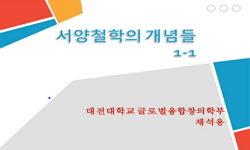Design is a result from representation of designer's creative thinking. and usually operated only in our internal organization system. After twentieth century, Modern architecture have changed rationality. Technical innovation and new materials brough...
http://chineseinput.net/에서 pinyin(병음)방식으로 중국어를 변환할 수 있습니다.
변환된 중국어를 복사하여 사용하시면 됩니다.
- 中文 을 입력하시려면 zhongwen을 입력하시고 space를누르시면됩니다.
- 北京 을 입력하시려면 beijing을 입력하시고 space를 누르시면 됩니다.

개념적 리얼리티와 건축디자인 언어의 추상성에 관한 연구 = A Study on the Conceptual Reality and the Abstraction of Architectural Design Language
한글로보기https://www.riss.kr/link?id=A106065159
-
저자
송석현 (신안산대학교)

- 발행기관
- 학술지명
- 권호사항
-
발행연도
2019
-
작성언어
Korean
-
주제어
Design Language ; Concept ; Abstraction ; Architectural design ; Reality ; Cognitive design ; 디자인언어 ; 개념 ; 추상성 ; 건축디자인 ; 리얼리티 ; 인지학적 디자인
-
등재정보
KCI등재
-
자료형태
학술저널
-
수록면
95-104(10쪽)
-
KCI 피인용횟수
0
- 제공처
-
0
상세조회 -
0
다운로드
부가정보
다국어 초록 (Multilingual Abstract)
Design is a result from representation of designer's creative thinking. and usually operated only in our internal organization system. After twentieth century, Modern architecture have changed rationality. Technical innovation and new materials brought on epoch-making changes in Designer’s Thinking and Architectural Behavior. A realistic expression of the past is replaced by a visual representation of specialized Modern design, inevitably, It has connoted abstraction. and It distinguished from “the dual image” in the general sense. Since the 1960’s. There have been a lot of effort to analyze design thinking process in various ways : Replacement Design, Rule Based Design, Analogy Design, Parametric Design, Genetic Algorithm, Metaphor Design. but It is still illogical and disorganized Because of the dependence on designer’s intuitive creation and subjective analysis. Abstracts of architectural design work as design elements and relationships. Designers focus on the relevant information between elements and variables. Design elements and variables are implicit in the outcome, giving symbolic images through abstraction, making information easy to understand. This study, as a leading study on the Systematization of modern architectural design language and creative thinking, aims to make a broad analysis of paradigm changes since the Industrial Revolution and to present the theory of conceptual reality and abstractness through the expansion of thinking, such as computation and parameter processing of various design elements. At this point, The abstraction of architectural design works in relation to the design element, and the designer intensifies the related information between the elements and variables. Design elements and variables, through abstraction, give semantic images, make information easy to understand, and are implicit in the results as characteristic elements.
참고문헌 (Reference)
1 길성호, "현대건축사고론" 미건사 1998
2 이정모, "인지과학" 성균관대출판부 2014
3 이정우, "시뮬라르크의 시대" 거름 1999
4 Wong Wucius, "디자인과 형태론" 국제 2000
5 Bryan Lawson, "디자이너의 思考方法" 기문당 1996
6 Colin Ware, "데이터시각화 인지과학을 만나다" 에이콘 2015
7 전영일, "건축디자인이론" 기문당 1997
8 Juan Pablo Bonta, "建築의 表現體系" 기문당 1999
9 William, J Mitchell, "The Logic of architecture" MIT press 1990
10 Andrea, Simitch, "The Language of Architecture" Rockport Publishers 2014
1 길성호, "현대건축사고론" 미건사 1998
2 이정모, "인지과학" 성균관대출판부 2014
3 이정우, "시뮬라르크의 시대" 거름 1999
4 Wong Wucius, "디자인과 형태론" 국제 2000
5 Bryan Lawson, "디자이너의 思考方法" 기문당 1996
6 Colin Ware, "데이터시각화 인지과학을 만나다" 에이콘 2015
7 전영일, "건축디자인이론" 기문당 1997
8 Juan Pablo Bonta, "建築의 表現體系" 기문당 1999
9 William, J Mitchell, "The Logic of architecture" MIT press 1990
10 Andrea, Simitch, "The Language of Architecture" Rockport Publishers 2014
11 Hofstadter, Douglas, "Surfaces and Essences" Basic Books 2012
12 Curtis, William, "Modern Architecture Since 1900" Phaidon Press 1996
13 Rowe P. G., "Design Thinking" MIT press 1987
14 Sussman, Ann, "Cognitive Architecture" Routledge 2014
15 Alexander, Christopher, "A Pattern Language" Oxford University Press 1977
동일학술지(권/호) 다른 논문
-
- 한국문화공간건축학회
- 박무호
- 2019
- KCI등재
-
공연시설의 외부 공간의 역할 및 구성 요소에 관한 연구 - 서울시 소재 공공 공연시설의 외부 공간 사례를 중심으로 -
- 한국문화공간건축학회
- 고영선
- 2019
- KCI등재
-
공공도서관의 시각깊이도 분석을 통한 열람석 배치 특성에 관한 연구 - 광주광역시·전라남도 지역을 중심으로 -
- 한국문화공간건축학회
- 임한솔
- 2019
- KCI등재
-
사회·문화적 배경이 청량리 역사(驛舍)의 건축적 변화에 미치는 영향 - 역사를 넘어서, 1911 - 2010 -
- 한국문화공간건축학회
- 장진욱
- 2019
- KCI등재
분석정보
인용정보 인용지수 설명보기
학술지 이력
| 연월일 | 이력구분 | 이력상세 | 등재구분 |
|---|---|---|---|
| 2026 | 평가예정 | 재인증평가 신청대상 (재인증) | |
| 2020-01-01 | 평가 | 등재학술지 유지 (재인증) |  |
| 2017-01-01 | 평가 | 등재학술지 유지 (계속평가) |  |
| 2013-01-01 | 평가 | 등재학술지 선정 (등재후보2차) |  |
| 2012-01-01 | 평가 | 등재후보 1차 PASS (등재후보1차) |  |
| 2011-01-01 | 평가 | 등재후보학술지 유지 (등재후보2차) |  |
| 2010-01-01 | 평가 | 등재후보 1차 PASS (등재후보1차) |  |
| 2009-01-20 | 학술지명변경 | 한글명 : 한국문화공간건축학회 -> 한국문화공간건축학회논문집 |  |
| 2008-01-01 | 평가 | 등재후보학술지 선정 (신규평가) |  |
학술지 인용정보
| 기준연도 | WOS-KCI 통합IF(2년) | KCIF(2년) | KCIF(3년) |
|---|---|---|---|
| 2016 | 0.28 | 0.28 | 0.25 |
| KCIF(4년) | KCIF(5년) | 중심성지수(3년) | 즉시성지수 |
| 0.23 | 0.23 | 0.406 | 0.25 |




 KCI
KCI






